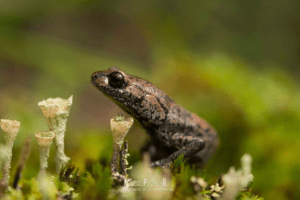
by Roberto Pedraza Ruiz
Our country stands out on a world scale for being one of the five richest countries in biodiversity. In other words, it is mega-diverse; taking first places in species diversity for various groups of flora and fauna, such as in pine trees, oak trees and agave cacti; and second place in mammals and fourth place in amphibians.
Mexico’s herpetofauna, its reptiles (804 species, including snakes, crocodiles, geckoes and other lizards) and amphibians (306 species of toads, frogs, cecilias, salamanders and Mexican salamander “Axolotl”) are a group of animals that, without a doubt, put a lot of people off and are often unjustifiably harmed as a result of this. However, they are mainly inoffensive creatures and occupy diverse and important ecological functions, for example, controlling insect and rodent populations, which directly benefit humans.
It is sadly common for the majority of Sierra Gorda’s inhabitants to harass or kill snakes or even innocent salamanders when they come across them, because of their beliefs and ignorance. Few snake species are actually poisonous and even if they are, they rarely behave aggressively.
Furthermore, these species stand out because an important number of them are endemic (60%), which means they exclusively live in Mexico. If these populations are limited in numbers, it makes them all the more susceptible to human activity and sadly, many of them are presently in danger of extinction. Out of the national total of 613 amphibian and reptiles species, 53% are in this category.
The Sierra Gorda Biosphere Reserve ranks second nationally for amphibians, with 140 species (104 reptile and 36 amphibian species, surpassed only by the Biosphere Reserve of Sierra de los Tuxtlas, Veracruz (145 species), which gives us an idea of its value as a refuge for this group of fauna. However, given the eco-diversity of the Sierra Gorda and the fact that there are many areas that still haven’t been studied, this suggests that there are species yet to be registered in this territory. On the other hand, despite the fact that there are currently about 176 federal reserves, which protect most of the country’s ecosystems and thousands of species of plants and animals, the situation of reptiles and amphibians is more delicate than that of other groups, since only about 61% (492 species) of reptiles have populations within one protected area. Similarly, the status of amphibians is critical, because only 137 species (38%) have protected populations. Threats to this group are diverse, ranging from people attacking them out of fear or just for “fun”; loss and fragmentation of their habitat, such as forests and jungles; disease; pollution and water sources, such as streams and rivers, being poisoned with domestic and industrial waste discharge, which amphibians are especially susceptible to since they breathe through their skin, therefore rapidly permeate any substance to their body.
However, climate change seems to be a larger threat, which is leading to the extinction of species, such as the golden toad (Bufo periglensis) which could be found in the cloud forests of Costa Rica, or other similar cases like in Puerto Rico, where drought caused three species of frogs to disappear and the population decline of six other species of the Eleutherodactylus genre. Another threat is when exotic species, such as trout, are introduced or escape into mountain streams where they can easily wipe out populations of frogs and salamanders.
As you can see, the picture is rather bleak for herpetofauna species, each of which fulfills a specific role in its habitat. It would be such a shame that by losing one species, we would lose millions of years of evolutionary processes that gave them their current characteristics.
